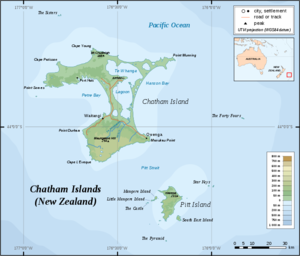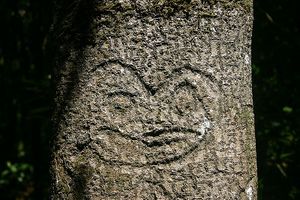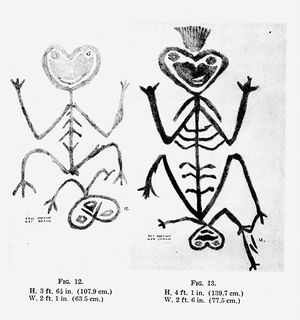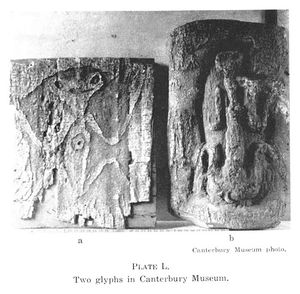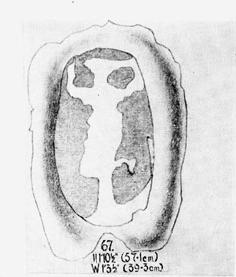Dendroglyphs of the Chatham Islands
History
The dendroglyphs (tree carvings) of the Chatham Islands were first cataloged in depth by Christina Jefferson between 1947 and 1956 at the urging of her advisor at the Canterbury Museum. Jefferson attempted the first complete record of these dwindling artifacts of Morioriculture.
The Moriori were a Polynesian people who migrated to the Chatham Islands sometime before 1500 and adapted a hunter-gatherer lifestyle and a culture unique to the island chain. Part of their culture included the art of momori rakau, or tree-carving, where human or other natural features were portrayed via incisions into the trunks of live kopi (karaka) trees. The purpose of these carvings is unknown, but a popular speculation is that the carvings were to commemorate ancestors or communicate with otherworldly spirits. A substantial number of the dendroglyphs survive in the JM Barker (Hapupu) Historic Reserve, where they are protected from livestock grazing and souvenir hunters. Still, the carvings are being lost to tree growth and weathering, so the record of these artifacts is all that will survive for future generations.[1]
Jefferson's Record
Christina Jefferson began cataloging the dendroglyphs in 1947 and continued writing on the subject until 1956. In this time, she cataloged 450 previously unrecorded glyphs from many different locations on the island and in 1955, she published "The Dendroglyphs of the Chatham Islands" in the Journal of the Polynesian Society. In this paper, she grouped the carvings into four general categories:[2]- Human figures
- Of the glyphs recorded, these are the most common. Prevailing features include a prominent, heart-shaped head and ribs for the torso. A Kura, a traditional feather headdress adorns the heads of many of the anthropomorphic carvings. These glyphs are thought to be commemorative, though the evidence for this is mostly conjectural and does not explain the prevalence of non-human representations.
- Zoomorphic representations
- Many of the carvings feature either fish or birds. Jefferson suggests the Moriori likened themselves to the birds of the Islands in that they "were always singing" and "lived in the bush". The fish represent a major food source, as agriculture was uncommon on the island. Jefferson speculates that the Moriori respected their source of food, and wished to bestow goodwill by carving them as kinsmen.
- Trees
- The trees of the island were another source of sustenance, so their likenesses were also preserved.
- Weapons and fashioned objects
- Several glyphs feature apparent weapons and tools used for fruit gathering.
Jefferson theorized about the different methods used to carve these trees. The predominant method is incision, where cuts were made, likely with a stone blade, to depths between one-half and two inches. This method usually left the bark in between features untouched. A second method she calls etching, where the bark is removed and the figure is etched at different depths to show shadow. A third method, used for faces, involved removing the bark in an oval shaped and carving onto the bare trunk of the tree. She calls this method the cameo method (pictured below). Many of the carvings employed a combination of these methods.
Recent Work
In 2007, Rhys Richards published Manu Moriori: Human and Bird Carvings on Live Kopi Trees on the Chatham Islands in which the author relates the human figures to what the Moriori called manu, or birds. The name of the book translates to "bird people", and suggests the Moriori were fascinated by birds and saw these carvings as a means to communicate with ancestors and local gods. However, representatives of the Chatham Moriori reject many of these claims and consider the work an exploitation of their cultural history for economic gain. [3]- ↑ http://www.doc.govt.nz/parks-and-recreation/places-to-visit/chatham-islands/jm-barker-hapupu-national-historic-reserve/
- ↑ http://www.jps.auckland.ac.nz/document/Volume_64_1955/Volume_64%2C_No._4/The_Dendroglyphs_of_the_Chatham_Islands%2C_by_Christina_Jefferson%2C_p_367-441/p1?page=0&action=searchresult&target=#
- ↑ http://www.doc.govt.nz/parks-and-recreation/places-to-visit/chatham-islands/jm-barker-hapupu-national-historic-reserve/
